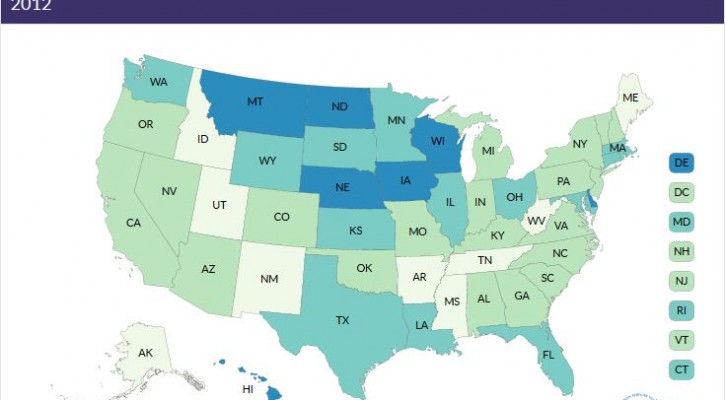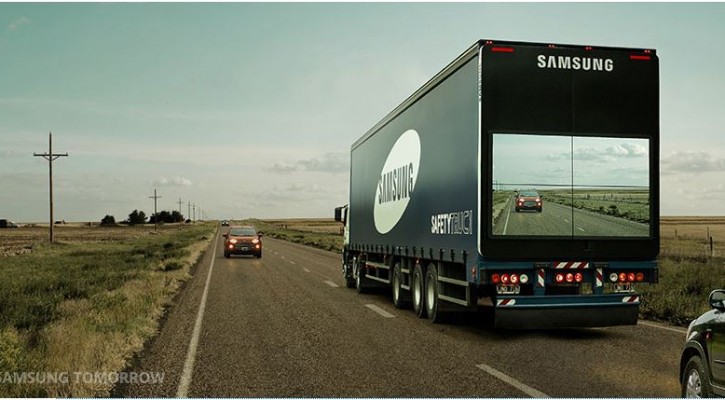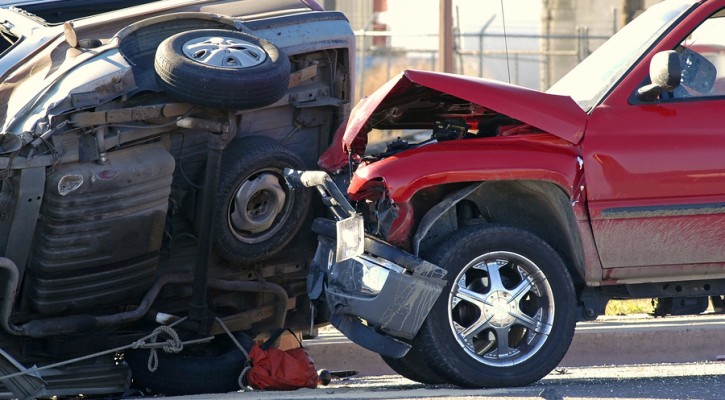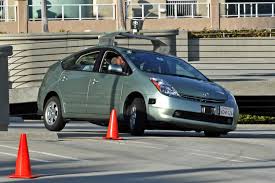
Over Four Million Reported Driving Drunk In The Last Month
August 19, 2015
A new report by the Center for Disease Control and Prevention (CDC) shows that more than four million drivers reported that they have driven while impaired in the previous month.
To compile the report, the CDC used the 2012 Behavioral Risk Factor Surveillance System survey, an anonymous telephone survey conducted by state health departments for the CDC that looks at behavioral risk factors nationwide. The results from the survey show that “an estimated 4.2 million adults reported at least one alcohol-impaired driving episode in the preceding 30 days.”
The survey goes on to break down the numbers by sex, age, and state. The greatest number of reported episodes were among men (80%). Among the men, the age group with the highest number of reported incidents were young men between the ages of 21 – 34 years (32%). The greatest number of reported incidents were reported in mid-western states.
Among those reporting an impaired driving incident, 85% also reported episodes of binge drinking. Binge drinking was defined as “women drinking four or more alcoholic beverages per occasion and men drinking five or more alcoholic beverages per occasion.” Those who reported binge drinking at least four times per month also accounted for 61% of the reported impaired driving episodes.
The survey also looked at seat belt use and those who reported that they didn’t always wear a seat belt had an impaired driving rate three times higher than those who reported always wearing a seat belt. Seat belt use was lower (55%) in states that had a secondary seat belt law compared to those who lived in states with a primary seat belt law (74%).
To combat the problem of drunk driving, the CDC suggested that states and localities should consider interventions that have proven to be effective such as:
- Expanding the use of publicized sobriety checkpoints.
- Enforcing 0.08 g/dL BAC laws and minimum legal drinking age laws.
- Requiring ignition interlocks (i.e., breath-test devices connected to a vehicle’s ignition that require a driver to exhale into the device, and that prevent the engine from being started if the analyzed result exceeds a preprogrammed level) for all persons convicted of alcohol-impaired driving.
- Increasing alcohol taxes.
- Additionally, all states might consider enacting primary seat belt laws that cover all passengers to help reduce fatalities in alcohol-impaired driving crashes.
To see how your state ranked in the survey, visit: Sobering Facts: Drunk Driving State Fact Sheets

Dangerous Changes For Trucking Industry Still Under Consideration By Congress
August 13, 2015
On July 30, the senate passed a transportation bill that included major changes for the trucking industry that many highway safety advocates say pose a danger to the traveling public. Before the bill could be approved by the house, the house had already left for their summer recess. That means that the proposed changes for the trucking industry will still be on the table when the bill is considered before a three-month stopgap funding bill expires at the end of October.
The transportation bill’s changes to trucking industry regulations that highway safety advocates consider to be dangerous include:
- A provision that would force the Federal Motor Carrier Safety Administration (FMCSA) to hide the safety ratings of trucking companies from the public. If passed, this provision would prevent shippers from accessing and considering the safety ratings of a trucking company they might wish to hire. According to the National Highway Transportation Safety Administration (NHTSA), large-truck drivers in 2013 had the highest percentage (15%) of previously recorded crashes compared to drivers of other vehicle types.
- A provision that would lower the legal age limit to hold a commercial driver’s license for interstate truck drivers from 21 to 18. According to National Highway Transportation Safety Administration (NHTSA) data, 18-20 year old drivers have a fatal crash rate that is 66 percent higher than that of drivers over the age of 21.
- A provision that would change the maximum length of double trailers from 28 feet to 33 feet and would force states that currently ban longer double trailers within their borders to accept the new federal lengths. Safety advocates fear that the wider turning radius and longer length of these double trailers will lead to more collisions.
These proposed changes come on top of the new rules enacted by congress last January that overturned the driving time limits and rest requirements for truckers that had been put in place by the FMCSA in 2013. The trucker responsible for the crash that disabled comedian Tracy Morgan and killed one of his friends had been awake for 28 hours before the crash.
According to NHTSA, there were 3,906 trucks involved in fatal crashes in 2013. Of the 3,964 people killed in those crashes, 71 percent were occupants of other vehicles. In 2013, there were approximately 95,000 people injured in crashes involving large trucks.
If you agree with the safety advocates that these changes go too far and pose a danger to the traveling public, you can let your congressional representatives know. To find contact information for your congressional representatives, visit: Find Your Senators and Representatives

Bill Would Allow Interstate Trucking Licenses For 18 Year Olds
July 13, 2015
A bill introduced in the US senate last week would lower the age limit for interstate truckers and allow 18 year olds to drive trucks across state lines. Under current federal law, drivers must be at least 21 to obtain a commercial driving license (CDL) to drive semi trucks across state lines. The legislation was introduced by Sen. Deb Fischer, R-Neb, as part of a larger transportation bill, in response to requests by the trucking industry to make up for a shortage of truck drivers nationwide.
This reduction in age limits for truckers comes after congress relaxed rules that were designed to keep sleepy truckers off the road. In 2013, the Federal Motor Carrier Safety Administration, in response to an 18 percent increase in fatal truck crashes over the previous three years, enacted rules designed to require longer rest periods for drivers. The new rules reduced the amount of time truckers could spend on the road from 82 to 70 hours per week and no more than 11 hours of driving within a 14 hour workday. Under a law passed by congress, those rules were reversed in January 2015.
According to National Highway Transportation Safety Administration (NHTSA) data from its Fatality Reporting System (FARS), 18-20 year old drivers have a fatal crash rate that is 66 percent higher than that of drivers over the age of 21.
Some states currently allow 18 year olds to qualify for a CDL license to drive trucks within state borders (intrastate) only but federal law prohibits them from driving across state lines (interstate) until they are 21. According to the trucking industry, it doesn’t make sense to allow intrastate driving by 18 year olds but prohibit them from interstate driving. However, safety advocates feel that 18 year olds don’t have the experience or the wisdom to drive big rigs safely over long distances.
The current laws that limit 18 year old truck drivers to intrastate driving basically come with a built in restriction on the number of hours the trucker can be on the road. There’s only so far you can travel within a state.
Under the proposed law, 18 year old truckers wouldn’t have the ability to drive across all state borders. States would have to enter into compacts with adjoining states to allow 18 year olds to drive across their borders but there is no limit on the number of states that could enter into such compacts. Safety advocates who are against the law fear that, with pressure from the trucking lobby, most states will enter into the compacts regardless of the possible risks.
According to the law, 18 year olds won’t be able to haul hazardous materials or to drive over-size or “specially configured” loads. States can impose additional restrictions on 18 year old drivers if they wish.
What do you think of the proposed law? Does it make sense or should the current rules stay in place? Contact your representative to share your feelings.
Read more: Teen truckers? Bill would lower interstate truck driver age to 18; industry cites shortage

Texas Enacts Law Requiring Hot Car Death Education
June 24, 2015
The State of Texas has enacted a new law that hopes to prevent child hot car deaths by requiring education for parents of newborns.
On June 19, 2015 the governor of Texas signed H.B. No. 2574 that requires midwives, hospitals, and birthing facilities throughout Texas to provide educational materials to parents of newborns warning of the dangers of heatstroke to children left unattended in a motor vehicle. The new law will take effect on September 1, 2015.
According to the website no heatstroke.org, Texas leads the nation in deaths of children left in a hot car. Between the years 1998 and 2014, 95 children died in Texas after being left alone in a hot car. Florida comes in second with 68 children killed.
Nationally, between 1998 and the writing of this article, 645 children have died in hot cars, an average of 37 per year.
In spite of all the news articles about the issue, it seems that people still aren’t getting the word. Eight children have died so far in 2015 and summer has just begun. However, the weather doesn’t have to be hot for a child to die in a car. With an outside temperature of 72 degrees, the temperature inside the car can rise to more than 100 degrees in 20 minutes. In an hour, the temperature can rise by more than 40 degrees inside the vehicle. Most of the heating takes place within the first 20 minutes and cracking the windows has little or no effect.
Small children don’t have the ability to regulate their body heat as efficiently as an adult; in a hot car, their body temperature can rise three to five times as fast as an adult’s.
As of now, only 20 states have laws that specifically prohibit leaving a child unattended in a vehicle. Only 15 states have “Good Samaritan” laws that protect someone who tries to render aid in an emergency situation and only a few of those state laws specifically protect someone who breaks a window or uses some other means to forcibly enter a vehicle to rescue an unattended child.
If you think your state should have laws that prohibit leaving a child unattended or that protect someone who breaks into a car to rescue an unattended child, let your legislators know. You can find information for contacting your local legislator by visiting: Find Your Legislator

Samsung Tests Safety Technology To Improve the View Ahead
June 22, 2015
Samsung is testing a fairly simple product idea that could make driving safer and save a lot of lives.
If you’ve ever been stuck behind a large semi on a narrow road, you know the frustration that comes from not being able to see the road ahead in order to pass the truck safely. Even when the truck may be going relatively slowly, its size makes passing hazardous because of the extra time required to pass and the danger of unseen oncoming traffic. This frustration can lead drivers to make dangerous choices that can result in a crash.
By using a front mounted camera and four large display screens on the rear of the truck, Samsung is testing a video display that will show the road ahead to drivers behind the truck. The video display of the road ahead works even on the darkest roads. Hopefully, the video display will allow drivers to make more informed and safer choices when deciding whether or not it’s safe to pass.
Noting that it has one of the highest highway death rates in the world and that many of the roads there are two lane roads, Samsung started testing this new idea in the country of Argentina.
According to the Samsung blog, the results look promising but more testing needs to be done.
Part of the data that needs to be evaluated is whether or not drivers will adapt to using this technology for its intended purpose or will it become just another driver distraction that takes the driver’s attention away from the road as a whole. Before testing can be done in other countries, testing protocols have to be developed and government permission has to be obtained.
Unfortunately, while the technology could prove to be extremely helpful to drivers behind a truck, it won’t do anything to eliminate the large no-zones around a truck that prevent the truck driver from seeing vehicles behind and alongside. Drivers will still need to be aware of and respect the no-zones while attempting to pass.
Read more: The Safety Truck Could Revolutionize Road Safety
Photo: Courtesy of Samsung

Collision Avoidance Systems Should Be Standard Equipment On All Vehicles: NTSB
June 12, 2015
Collision avoidance systems should be standard equipment on all new vehicles according to a new report issued by the National Transportation Safety Board (NTSB). The NTSB is the federal agency whose job is to investigate transportation crashes of all types; aircraft, train, ship, bus, or truck. The report came about as a result of the investigation of just nine rear end motor vehicle crashes involving 48 vehicles that resulted in 28 deaths and 90 injuries.
In the US, rear end crashes are the most common type of crash involving two or more vehicles. According to the NTSB report, rear end crashes make up almost half of all motor vehicle crashes involving two or more vehicles. In the years 2011 and 2012, rear end crashes resulted in the deaths of 3,491 people and more than a million injuries. In 2012 alone, there were more than 1.7 million rear end crashes.
There are several reasons for rear end collisions including; driver distraction, false expectations of of driver intent, unsafe speed, and fatigue. However, the most common reason, according to the National Highway Transportation Safety Administration (NHTSA) is driver distraction. According to NHTSA, 87 percent of rear end crashes are due to driver distraction.
Several different types of collision prevention systems have been available over the past 20 years including;
- Collision warning systems (CWS) that alerted a driver to the possibility of a collision.
- Adaptive cruise control (ACC) that automatically maintains a safe following distance between vehicles ahead.
Both the CWS and ACC systems are passive systems that still required the driver to take action to avoid a rear end crash but the driver may not react in time.
The latest version, known as the collision avoidance system (CAS) combines the CWS and ACC into an active system that takes control of the vehicle to avoid a crash. If the CAS system senses a probable crash, it will automatically apply the brakes in time to avoid the crash. The CAS system can respond much faster than the human driver.
Using the data from the 2011 and 2012 crash database, the NTSB estimated that the use of a collision avoidance system could have saved up to 2,220 lives. They also estimated that injuries could have been avoided or reduced in 93.7 percent of those crashes.
Collision avoidance systems are already available in a few high end model cars. The NTSB is making the following recommendations regarding collision avoidance systems:
- For manufacturers to install forward collision avoidance systems as standard features on all newly manufactured passenger and commercial motor vehicles,
- For NHTSA to expand the New Car Assessment Program to include a graded rating to assess the performance of forward collision avoidance systems, and
- For NHTSA to expand or develop protocols for the assessment of forward collision avoidance systems in passenger and commercial vehicles.
Read more: Safety Shouldn’t Be a Luxury Feature
NHTSA Introduces DADDS To Stop Drunk Drivers
June 4, 2015
A new system called DADDS (Driver Alcohol Detection System for Safety) was introduced to lawmakers, researchers, and safety advocates by the National Highway Traffic Safety Administration (NHTSA) today.
DADDS is designed to prevent a vehicle from starting if alcohol is detected in a driver. The system under development can do this in one of two ways, either through detection of alcohol in the driver’s breath or through touch on the vehicle’s starter button.
DADDS has been under development for several years through a joint effort by NHTSA and the Automotive Coalition for Traffic Safety (ACTS) a coalition of automotive industry groups. Together, they have worked with private sector researchers to develop this potentially life saving technology.
More than 10,000 deaths per year are caused by drunk drivers. That’s approximately one-third of all highway deaths in a year. It’s hoped that this system, once it’s fully developed, can prevent the majority of those deaths.
According to NHTSA, the research has been in progress since 2008 and is progressing in three stages:
- Phase I – Research and analysis of two different technological approaches to measuring driver alcohol levels – a touch-based approach allowing assessment of alcohol in human tissue and a breath-based approach allowing assessment of alcohol concentration in the driver’s exhaled breath focused on speed, accuracy and precision. Completed 2011.
- Phase II – Additional Research and testing of touch-based and breath-based sensors to improve accuracy and precision performance, and decrease measurement time to meet or exceed DADSS performance specifications. The prototypes will then be installed in a research vehicle. This phase is expected to be completed early 2016.
- Phase III – Phase III and subsequent phases of research will permit further refinement of the technology and test instruments as well as basic and applied research to understand human interaction with the sensors both physiologically and ergonomically – that is, how these technologies might operate in a vehicle environment. This phase began in late 2013 and is being conducted in parallel with the Phase II research.
Once the DADDS system is fully developed, NHTSA hopes that starting a vehicle will be seamless and practically unnoticeable to a sober driver but impossible for a drunk driver.
Read more: DADSS technology offers big leap forward in drunk driving prevention

Bicycle Deaths – Florida Sets Another Record
May 18, 2015
When it comes to roadway safety, Florida has set another record – the highest rate of bicycle deaths in the nation. Florida’s lead in bicycle deaths follows another Florida record as the number one killer of pedestrians.
In terms of population, Florida is only the third largest state in the US after California and Texas so it would seem that those two states would have a much higher rate of bicycle deaths and in raw numbers, that may be true but when you compare populations, Florida has the highest rate of all.
Let’s look at how the numbers fall out.
|
State |
Population in millions |
Number of registered motor vehicles in millions |
Number of cyclists killed |
Rate of cyclists killed per million of population |
|
California |
38.8 |
33.55 |
141 |
3.68 |
|
Texas |
26.96 |
23.87 |
48 |
1.81 |
|
Florida |
19.89 |
19.64 |
133 |
6.8 |
Florida, with less than half of the population and just a little over half the number of registered vehicles of California, had just eight fewer bicycle deaths than California. When compared to the rate of bicycle deaths per million population, Florida beats every other state in the nation.
So, what’s Florida doing wrong? The League of American Bicyclists puts out a report card every year that rates states on their friendliness to cyclists. To rate states they look at;
- Legislation and enforcement;
- Policies and programs;
- Infrastructure and funding;
- Education and encouragement; and
- Evaluation and planning
In their latest ranking, the League rates California as the eighth friendliest state for cyclists while it rates Florida 24th. In all five categories, California ranks near the top while Florida’s rankings are near the bottom.
The two main areas that Florida needs to work on are:
- Vulnerable road user law – A law was proposed in the last session of the legislature that would have imposed higher penalties for any driver that passes or turns in front of a vulnerable road user (pedestrians, cyclists, animal riders, personal mobility devices) in an unsafe manner. The bill looked like a sure thing to pass however, in a dispute between the Florida Senate and the House, the bill failed to pass during this session.
- Complete Streets – Complete Streets are roadway projects designed with both cyclists and pedestrians in mind. When widening existing roads or proposing new roadways, Florida is falling short in planning and designing for Complete Streets.
Read More: The Deadliest States for Bikers

Self Driving Cars Weren’t At Fault In Small Number Of Crashes
May 13, 2015
Self driving cars have recorded very few crashes and, for the most part, weren’t at fault in those they did experience according to research done by the Associated Press.
While self driving cars, have been on the road for several years, the manufacturers weren’t required to publicly report crashes involving their cars until a new California law went into effect in September of 2014. That law made public reporting of crashes involving self driving cars a part of the licensing agreement to test the cars on state roads.
Google has been driving their self driving cars on California roads for six years. At all times, there are engineers behind the wheel ready to take over in case something goes wrong. According to Google, the cars have have driven more than 1.7 million miles with one million of those miles completely automatic.
According to Google, their 23 cars have been involved in eleven minor crashes with only minor damage and no injuries. Google claims that none of the cars on automatic mode were at fault in the crashes.
In April, in the first trip of its kind, Delphi Automotive sent a self driving car across the country from California to New York with 99 percent of the driving done by the car’s automatic controls. There were no reported incidents. Delphi did report one crash previous to the cross-country trip in which the driver of the other vehicle was at fault.
The promise of self driving cars is that they will make driving safer because, unlike human drivers, they follow traffic rules, obey the speed limit, and watch for hazards on the road. Even in an “unavoidable” crash, say with a red light runner, the self driving car can react quicker and apply the brakes or perform an evasive maneuver that will lessen the impact of the crash.
As of now, four states (California,Nevada, Michigan and Florida) plus the District of Columbia have passed laws authorizing testing of self driving cars on their roads. None of the other states outside of California have reported any crashes.

Drivers Prefer Collision Avoidance Over Wireless Technologies
April 29, 2015
A study published last week By J.D. Power shows that consumers prefer collision avoidance technology over wireless connectivity in their automobiles. At a time when auto manufacturers seem to be rushing to add more and more distracting wireless technologies to their new vehicles, this study comes as a welcome bit of news to driving safety advocates.
The J.D. Power 2015 U.S. Tech Choice Study showed that the top three out of five technologies consumers wanted in their next vehicle are collision avoidance technologies. The top three choices are:
- Blind spot detection and prevention systems,
- Night vision, and
- Enhanced collision mitigation systems.
According to J.D. Power, consumers are showing more acceptance of self-driving vehicles and the top three technologies that consumers prefer are the building blocks for eventual fully autonomous vehicles.
The study showed that the last two preferences on the top five are camera rearview mirrors, a driver assistance aid, and self-healing paint which falls into the “comfort and convenience category.”
Choices between operating systems and wireless carriers are one of the reasons consumers felt less inclined to prefer wireless technologies in new vehicles. Consumers are loyal to either Android or Apple operating systems and their wireless carrier. Consumers are wary about having the automaker choose an operating system for them and, until automakers solve the problem of a one size fits all system, wireless will remain a low priority.
Consumers also showed little enthusiasm for “advanced sensor technologies, such as hand gesture controlled seats, biometric driver sensors, or haptic touch screens.”
Read more: Consumer Preference for Collision Protection Technologies Paves the Way for Autonomous Driving
